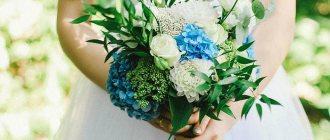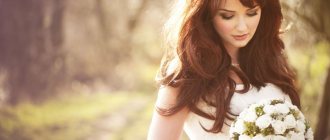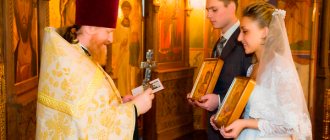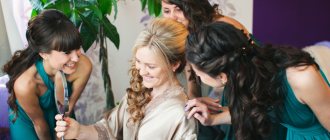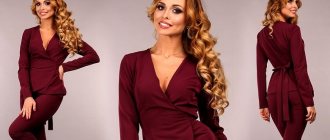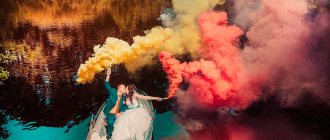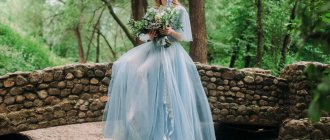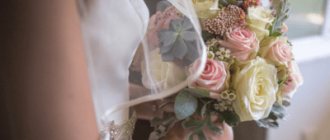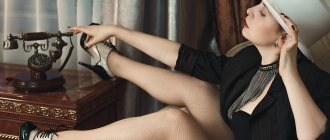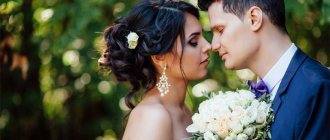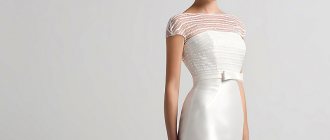Of course, for wedding photography today it is worth taking a DSLR camera. For a number of parameters, other types of cameras are not suitable. Below we will consider not only expensive cameras. Let's start with the most affordable options.
Bride's preparations
Filming takes place indoors. The most popular focal lengths are from 14 mm (bride with bridesmaids in the interior) to 85 mm (bride close-up, wedding details). However, limited space does not allow the use of long focal length lenses. Therefore, for this unit you need either a standard zoom or a 50 mm fixed lens.
Here are a few suitable models from my rating: Canon EF-S 18-55 mm f/3.5-5.6 IS II, Nikon 18-55mm f/3.5-5.6G AF-P DX, Nikon 50mm f/1.4D AF Nikkor
Nikon D300s for wedding photography
Let's start with Nikon. The old D300s is still on sale. And to this day his successor has not emerged. The D300s is a professional crop camera from Nikon. It is just perfect for wedding photography: the camera is reliable - it is made entirely of magnesium alloy, it has two slots for memory cards, and has an excellent shooting speed. The D300s is equipped with Nikon's best focusing system to date and has 51 points in its arsenal. Autofocus is very fast - perfect for reporting. The camera focuses well in difficult shooting conditions. Ergonomics are also excellent - the body is quite large, the buttons are located on the body. In principle, I talked about this in more detail in the review of the D300, which differs little from the D300s, but still, due to the presence of two memory card slots, I recommend the latter device for wedding photography. Another undoubted advantage of the camera, something that once again emphasizes its professionalism, is a large memory buffer, which allows you to shoot in bursts longer than on amateur DSLRs.
But the camera also has its drawbacks. Still, Nikon D300s is a bit old. The 13 megapixel matrix is inferior to the company's new amateur DSLRs. It loses not in megapixels, but in its properties - noise at high ISOs, lower dynamic range. Another disadvantage is the fact that although the camera is considered a reportage camera, in RAW 14-bit this camera is not capable of shooting faster than 2.5 frames per second. So, if this is important to you, consider this feature of the camera. In other modes it has no problems with speed.
Outdoor photo shoot
Here you can use almost the entire range of focal lengths. You can start with wide-angle ones, which will allow you to capture the location of the photo shoot, and “fit” the main characters into it. Next, you can use a standard focal length for portraits of the bride and groom. And you can finish it off with a telephoto lens, which will allow you to take beautiful perspective photos with beautiful bokeh.
For all this, you will need, in addition to the previous ones, a long-focus lens. Another option is to buy a universal super zoom with a wide range of focal lengths, for example from 18 to 150 mm.
Suitable models: Nikon 18-140mm f/3.5-5.6G ED VR DX AF-S, Canon EF-M 18-150 mm f/3.5-6.3 IS STM, Canon EF 70-200mm f/4L USM, Nikon 70-300mm f/4.5-5.6E ED VR AF-P Nikkor
Is Nikon d7100 suitable for wedding photography?
In principle, yes, it does. The camera is positioned as an amateur one. Just like the D300s, it is a crop camera. In my opinion, it is the best for today. The D7100 came out quite recently and, as a result, incorporates all the latest technologies. The camera has an excellent 24 megapixel matrix. In terms of characteristics, it is the best among all crops today. In addition, they did not install a low-pass filter in front of the matrix, which allows you to get an extremely sharp image using the Nikon D7100. About the advantages for photographing weddings: two memory cards, comfortable ergonomics, a more compact body compared to the Nikon D300s, which may appeal to many, including female photographers. The focusing system was migrated from the same D300s, so everything is fine with that too. The D7100 has no problems with high-speed shooting at maximum RAW file quality, which the 300 had.
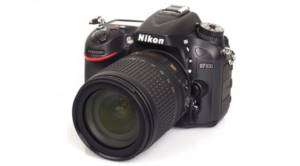
Well, it’s worth talking about the disadvantages. The camera's design is less robust than its professional counterpart. Here, not only magnesium alloy is used, but also plastic - in fact, due to this, greater lightness of the structure is achieved. For those who like to shoot in series, a much smaller camera buffer, which is not designed for reportage shooting, can be a problem.
comparison table
| Grade | Lens mount | Diaphragm | Lens stabilizer | |||
| 1 | Canon EF-S 18-55 mm | 3 /5 | Canon EF/EF-S | 3.5-5.6 | There is | More details |
| 2 | Nikon 18-55mm | 4.5 /5 | Nikon F | 3.5-5.6 | There is | More details |
| 3 | Nikon 50mm | 4 /5 | Nikon F | 1.4 | No | More details |
| 4 | Sony FE 50mm | 4.5 /5 | Sony E | 1.8 | No | More details |
| 5 | Canon EF-S 18-55mm | 3.5 /5 | Canon EF/EF-S | F4.0;5.6-F22 | There is | More details |
| 6 | Nikon 10-20mm | 3.5 /5 | Nikon F | F4.5;5.6-F29 | There is | More details |
| 7 | Canon EF 70-200mm | 4.5 /5 | Canon EF | F4 | No | More details |
| 8 | Nikon 70-300mm | 4 /5 | Nikon F | F4.50 - F5.60 | There is | More details |
| 9 | Canon EF-M 18-150 mm | 4.5 /5 | Canon EF/EF-S | 3.5-6.3 | There is | More details |
| 10 | Nikon 18-140mm | 4 /5 | Nikon F | 3.5-5.6 | There is | More details |
Canon 7D – the last samurai
No, in fact, it is not the last: the next version of the device has already been released - Canon 7D Mark II. But when you find out the price of the second version, you might realize the meaning of the title. The Canon 7D is definitely the company’s latest affordable device (among crop cameras) that is designed for reportage shooting. It can still be purchased in new condition. There are no detailed reviews of the second 7D yet, so it is not possible to find out why Canon wants so much money. As for the first version, like the Nikon D300s, it is somewhat outdated. In general, the cameras are similar; in fact, they are competing cameras.
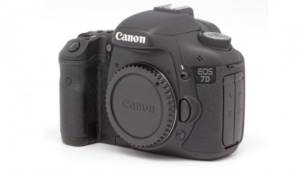
Purely technically and on paper, the D300s is more perfect. The Canon 7D does not have a second memory card; it has worse some matrix indicators (for example, dynamic range). It handles high ISOs a little better. But let's be honest, the question of Nikon D300s or Canon 7D is not a question of choosing a camera, but rather a choice between brands. And as you know, to the question of what is better than Canon or Nikon, no one will give you an exact answer. You have to choose for yourself, at the subconscious level, probably...
Wedding Photographer Tools
Good day, dear friends! I’m with you again, Artyom Kondratenkov, and today we’ll talk about the technique of a wedding photographer.
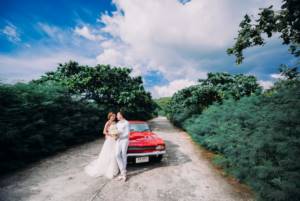
NIKON D810 / 14.0-24.0 mm f/2.8 SETTINGS: ISO 200, F2.8, 1/5000 s, 14.0 mm equiv.
In the previous article, I already drew your attention to the fact that wedding photography is a business with a fairly low barrier to entry, that is, at the initial stage you can get by with a minimum set of semi-professional equipment and, in the process of improving your photographic skills, upgrade your photographic backpack.
So where to start choosing? The softest place in our photo backpack is, of course, the camera itself (the body). Cameras can be divided into three groups: amateur (D3200, D5200), semi-professional (D7200, D610, D750, D810) and professional (D4, D4s, D5).
Nikon D5200
Nikon D750
Nikon D4s
Very rarely does anyone come into wedding photography from scratch and consciously; often amateur photographers already have some kind of instrument of torture for cats, loved ones and sunsets. As a rule, this is a weapon from the first risk group. Having undergone initial training or hardened by the first wedding, novice photographers understand that this segment of SLR cameras, to put it mildly, is rather weak for active commercial photography, but cats and sunsets don’t care. In principle, you can photograph a wedding in high quality with an amateur camera, but in ideal conditions and slowly. As soon as you have to shoot an active reportage or a banquet in pitch darkness, correct an exposure error in RAW, or quickly change settings without diving into the menu, you will understand that this camera is better left to your younger brother so that he can continue to maintain the family archive on vacation.
Amateur crop cameras have an APC matrix, which is half the size of the full frame of professional cameras. A smaller matrix means a smaller dynamic range and, as a result, problems in processing “complex” frames, the presence of digital noise when shooting in low light conditions.
NIKON D600 / 14.0-24.0 mm f/2.8 SETTINGS: ISO 400, F4, 1/1250 s, 14.0 mm equiv.
Amateur cameras do not have such tenacious and fast autofocus, simplified control modules, and they are completely defenseless against weather disasters. Therefore, I would recommend going into battle with more advanced Nikon cameras: D610, D750 or D810. They are much more reliable than the amateur segment; they do not have the above-mentioned disadvantages. Another undeniable advantage of semi-professional and professional cameras is two slots for memory cards, which allow you to make a backup of the current shooting, thereby eliminating the possibility of loss of footage if the main card unexpectedly fails. An exception to the rule is the new D7200 camera, which has an excellent APS-C crop sensor, which allows flexible work with dynamic range. This camera was also equipped with a good autofocus system, a sufficient rate of fire, advanced controls and two memory cards, so we can safely classify it as semi-pro and take it with us to wedding photography. The only disadvantage of this system is the optics, which then cannot be placed on a hollow frame. We are talking about the ultra-wide angle AF-S DX NIKKOR 10-24mm f/3.5-4.5G, AF-S DX ZOOM-NIKKOR 12-24mm F/4G IF-ED and other lenses created specifically for crop cameras.
Nikon AF-S 10-24mm f/3.5-4.5G ED DX Nikkor
Nikon 12-24mm f/4G ED-IF AF-S DX Zoom-Nikkor
Does a wedding photographer need the flagships of the professional line - D4s and D5? This question cannot be answered unambiguously. Many find in them what they were looking for: fantastically fast autofocus, incredible rate of fire, an almost bottomless buffer and an equally bottomless battery. However, simpler cameras (D750 and D810) are enough to solve my problems. The enormous weight of top-end cameras makes twelve-hour wedding photography simply a chore. When you return home after such a shoot, your finger joints, neck and shoulders are simply begging to switch to something lighter, and please note that these are the “words” of the joints of a fairly strong guy who periodically juggles dumbbells in the gym. So I think we should leave these titans to sports photographers and enjoy the ease of their little brothers.
NIKON D4 / 24.0-70.0 mm f/2.8 SETTINGS: ISO 80, F2.8, 1/1250 s, 24.0 mm equiv.
It seems to me that we have figured out the cameras, let's now talk about optics. As a rule, a person comes into photography with the so-called whale optics (kit) - the one that came with the camera when purchased. It’s enough to photograph barbecues at the dacha or Fyodor Stepanovich against the backdrop of the lake. In other words, this optics is only enough to maintain a family archive (a harsh statement of reality without a bit of artistry). Yes, a “whale” lens can be used at a wedding, but you won’t get the fairy tale that a bride expects to see after watching enough fashion blogs and vanilla wedding magazines. Therefore, it can be used in conjunction with some budget fast prime: for example, with NIKKOR 50mm f/1.8G or NIKKOR 85mm f/1.8G. With this first and cheapest set you can already step into wedding photography. With a kit lens you can shoot more general plans, which do not require much artistry. But 50 mm or 85 mm primes will decorate your series with beautiful portraits of different sizes with a well-blurred background due to their aperture.
Nikon AF-S 85mm f/1.8G Nikkor
Nikon AF-S 50mm f/1.8G Nikkor
When you start processing photos, you will see the difference between cheaper kit optics and your primes. The photos will differ in color, contrast, sharpness and detail, and you will immediately want to exchange your kit lens for something more expensive and of higher quality. The first lens that universal kit zooms are replaced with is a wide-angle zoom. It is usually used to shoot landscape sketches, geometry, reports and just general plans. You can immediately buy a top-end wide lens for life (NIKKOR 14-24 f/2.8) and enjoy a fantastic picture, or you can save a little and buy an intermediate link that produces just good results (NIKKOR 16-35mm f/4G).
Nikon AF-S 14-24mm f/2.8G ED
Nikon AF-S 16-35mm f/4G ED VR Nikkor
Medium focal lengths can be covered by a 50 mm prime or a 24-70 zoom (reportage and medium-sized portraits), but I also recommend having long-focal optics, which start from 85 mm and above. From it you can take close-up portraits and film the ceremony without going close to the couple.
NIKON D810 / 24.0-70.0 mm f/2.8 SETTINGS: ISO 640, F3.2, 1/2000 s, 60.0 mm equiv.
The aperture of the lens plays a significant role, because it gives us a decent head start in exposure (that is, we can get a better image in poor lighting conditions) and the artistic blur of the background that everyone loves so much. The cost of the lens directly depends on this value. The best zooms have an aperture of f2.8, and the aperture of primes goes up to f1.4.
NIKON D810 / 45.0 mm f/2.8 SETTINGS: ISO 160, F4, 1/500 s, 45.0 mm equiv.
There are two camps of wedding photographers. Some people prefer to shoot with fixed focal length lenses. In their arsenal there are 3 or 4 fixes: 14 mm or 20 mm - wide-angle (landscapes, geometry, general plans), 35 mm - moderate wide-angle (reportage, general photographs and medium plan), 50 mm - (portrait, reportage, medium plans) and 85 mm or 135 mm - long-focus optics (close-up portraits, reportage). The style of shooting with these lenses is more leisurely and involves a greater share of staging. Photos taken with prime lenses are softer, airier and more artistic. With such a set, they usually work with two bodies, immediately placing a wider angle on the first, and a telephoto lens on the second. This method allows you to not change lenses on the body so often and quickly assemble different plans from one scene without juggling optics. Since primes are much cheaper than zoom lenses, this design is very popular among beginning photographers.
NIKON D4 / 50.0 mm f/1.4 SETTINGS: ISO 100, F2.8, 1/4000 s, 50.0 mm equiv.
The other camp is zoom lovers, who have only 3 lenses in their arsenal, covering almost all focal lengths: 14-24 or 17-35 - wide-angle zooms, 24-70 - medium zoom, 70-200 - long-angle zoom. Of course, the picture on zoom lenses is not as “tasty” as on prime lenses, they don’t have that softness and airiness, but they are very comfortable. Let's say, when shooting a report with a 24-70 lens, while being at a focal length of 24 mm and taking a general shot, in a split second we can switch to a close-up (70 mm) if we notice that someone has begun to radiate good emotions.
Nikon AF-S 24-70mm f/2.8G ED VR Nikkor
Nikon AF-S 70-200mm f/2.8G ED VR II Nikkor
Nikon AF-S 14-24mm f/2.8G ED
Nikon AF-S 50mm f/1.4G Nikkor
Nikon PC-E Micro NIKKOR 45mm f/2.8D ED
The division into primes and zooms is very arbitrary, and pros have both lenses in their arsenal; I will demonstrate this using the example of my backpack. I consider myself to be a fan of zoom lenses, so I have collected the entire line of top zooms: AF-S NIKKOR 14-24mm f/2.8G ED, AF-S NIKKOR 24-70mm f/2.8G ED, AF-S NIKKOR 70 -200mm F2.8G ED VR II. As for primes, I have the AF-S NIKKOR 50mm f/1.4G, which I use for portraits at the bride and groom’s gathering and for photographs of details and decor. There is also a PC-E NIKKOR 45mm f/2.8D Micro ED lens. This is a tilt-shift lens that I often use on walks to get shots with a non-standard blur at the top and bottom of the frame, which gives the shot an airiness, and in the case of a shot, a toy city effect.
NIKON D810 / 45.0 mm f/2.8 SETTINGS: ISO 640, F2.8, 1/5000 s, 45.0 mm equiv.
Not everyone will be able to immediately buy such a set of optics with an average cost of $8,000. If you are sure that wedding photography is your calling, then it is better to take out a loan and buy top-end optics in order to immediately receive high-quality photos that require virtually no processing. But if there is no such confidence, it is better to follow the path of gradual upgrades of your glasses whenever possible.
The principle of upgrading your optics fleet is this: if you start with a kit lens (for example, 18-55mm f/3.5-5.6), then you should buy a 50mm 1.8f and 85mm 1.8f to go with it - with this set you can already go shoot a wedding. The next step is to replace the kit zoom with a higher-quality wide-angle lens (for example, a 16-35mm f/4G, and if possible, then a 17-35 f/2.8 or 14-24 f/2.8). A step forward is to purchase a long focal length 70-200 f/4 (ideally 70-200 f/2.8) or replace the 85mm f/1.8 with its faster brother 85mm f/1.4 if the 70-200 is heavy and inconvenient for you. And don’t forget about the reportage lens. Its function, of course, can be performed by 35 mm of your “wide” lens, but I would recommend purchasing a 24-70 f/2.8 to solve such problems.
NIKON D810 / 70.0-200.0 mm f/2.8 SETTINGS: ISO 100, F2.8, 1/400 s, 110.0 mm equiv.
NIKON D810 / 50.0 mm f/1.4 SETTINGS: ISO 400, F2.8, 1/6400 s, 50.0 mm equiv.
I've always learned to work only with natural light and focus on the content rather than the form when shooting, so I don't have any lighting equipment or reflectors in my backpack except for the SB-700 flash, which I only use as a last resort. This is partly due to the large number of overseas filming, for which you cannot take a lot of equipment.
In wedding photography, the right choice of equipment is an important component, without which you cannot move forward. This is a mandatory investment, but by no means a guarantee of success. It’s not enough just to have good equipment, you need to be able to use it competently, and that’s exactly what our next articles will be about!
Canon 5D Mark III – a dream for wedding photographers
And not only wedding ones. A legendary camera that not only Canon fans, but also some Nikonists would not mind getting their hands on. The latest version of the "five". Yes, she's very cool. This is no longer a crop – now we’ll talk about full-frame DSLRs. The Canon EOS 5D Mark III has in its arsenal a 22 megapixel FF matrix (sorry for discarding tenths - to be more precise, it’s 22.3 megapixels), an excellent 61-point autofocus system. It’s not even convenient to talk about two memory cards and other little things - they are here by default.
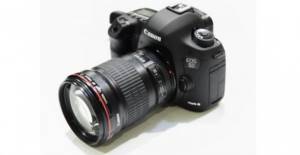
It should be noted that not everyone praises the camera. Comparing it with the Nikon D800, one can come to the conclusion that Canon, to put it mildly, is deceiving everyone. The fact is that in comparison with the amazing D800, which was presented to the world, the “Tripyatak” seemed like a spit in the soul. Firstly, it was not very different from the second version, and secondly, in terms of basic indicators it was still seriously inferior to the D800. The main indicators are a collective image, which can be briefly called “image quality”. So, this most notorious “quality” is really better in Nikon. 36 megapixels, amazing dynamic range, excellent camera performance at high ISOs - this is what makes the D800 better than its competitor.
However, in our article today there are no recommendations for purchasing the D800. Because, in my personal opinion, the D800 is not suitable as a camera for wedding photography. Not fast enough, too many pixels - these parameters, in my understanding, put an end to the Nikon D800 as a camera for weddings. But the third “nickle” is just perfect for the role of such a camera.
Nikon D700 – a living legend
Don’t think that Nikon has nothing to choose from for wedding photography. This is wrong. Nikon D700 is a camera, the mention of which will make any “canonist’s” eye twitch. It's no joke, its characteristics are almost as good as the new Canon 5D Mark III, but the D700 was released quite a long time ago. In essence, it is like the Nikon D300s, only even more suitable for reportage shooting and having a full-frame sensor. And one more nuance: the camera has been discontinued and is no longer sold in stores. You can only buy it from hand. However, this does not prevent him from remaining extremely popular among photographers.
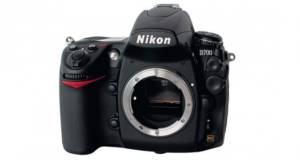
Its real disadvantages, besides its absence in stores, include its slightly outdated matrix (compared to new Nikon cameras). It’s quite difficult to blame this camera for anything else. Still, the D700 is an excellent choice for a wedding photographer.
